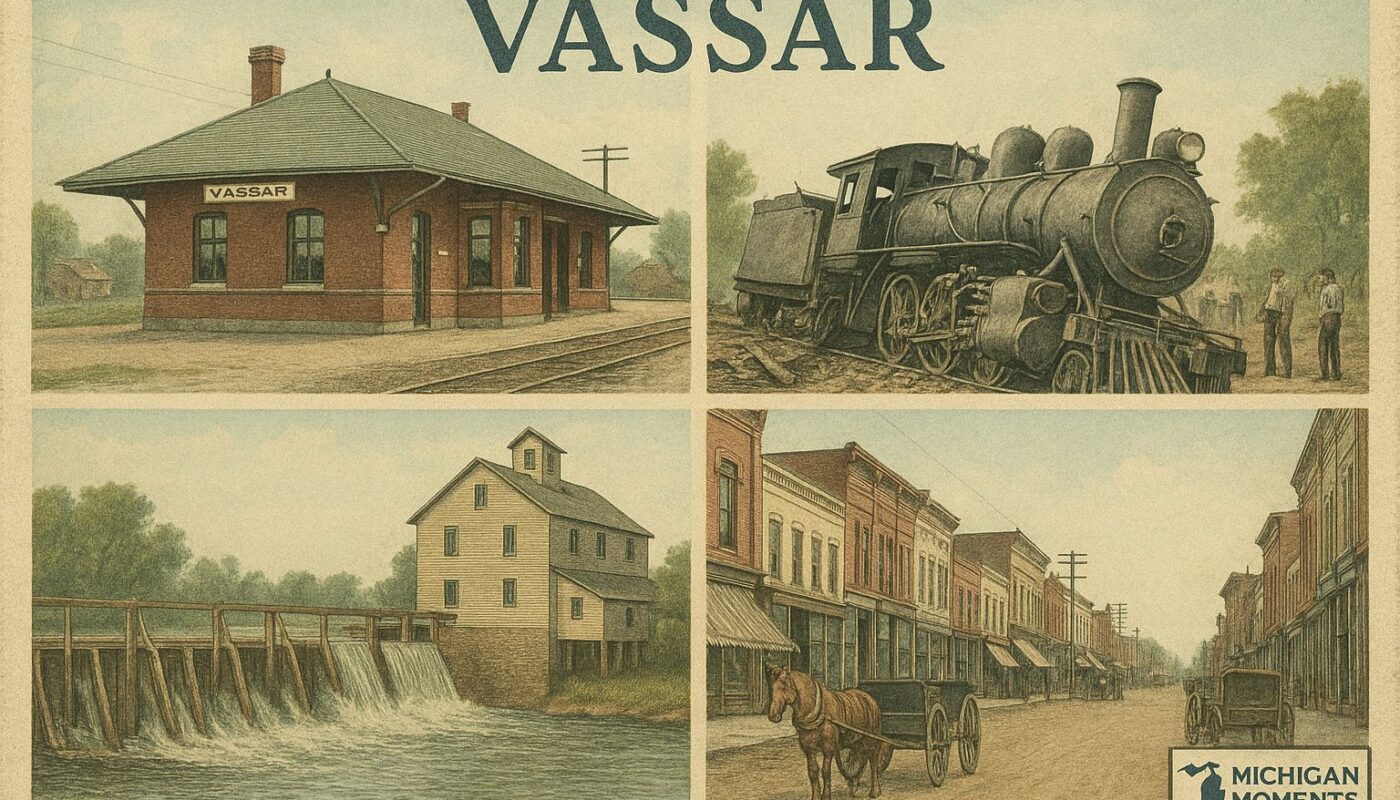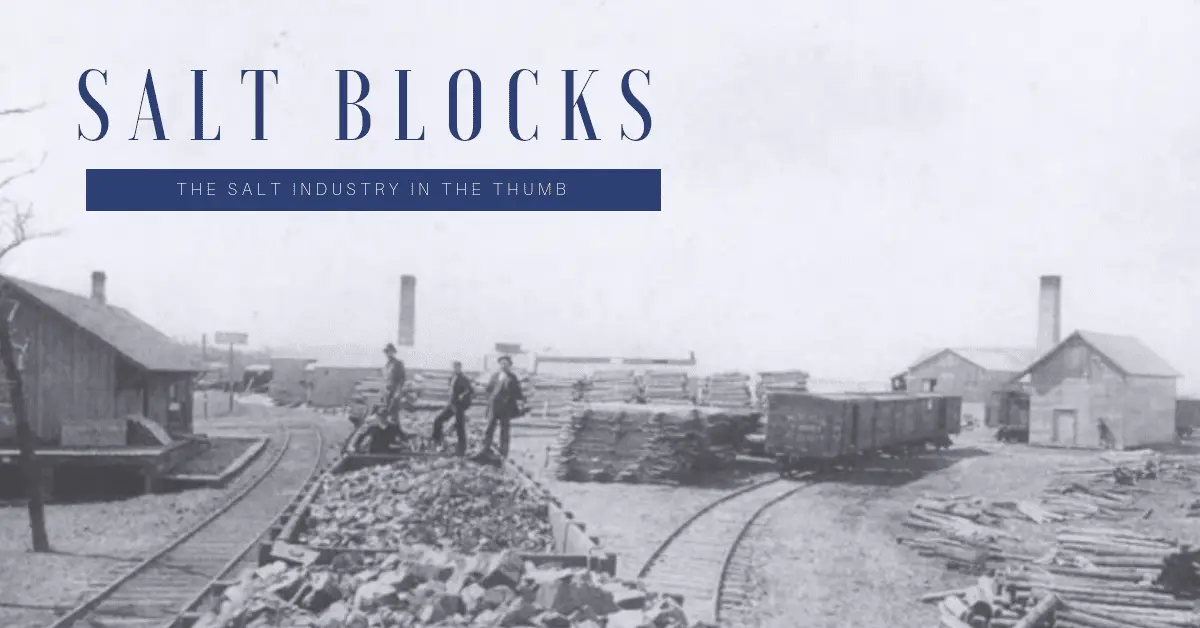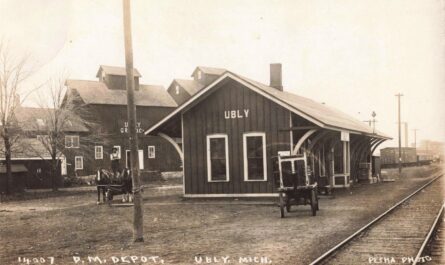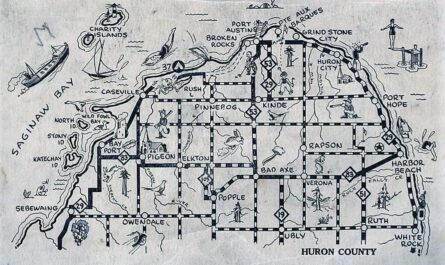Between 1908 and 1930, life in Vassar, Michigan wasn’t easy — but it sure was eventful. The Cass River flooded downtown more than once. At least 28 times, in fact, according to local records. In 1911, a Michigan Central freight train jumped the tracks near town, drawing a crowd and a lot of questions. While the lumber boom had faded, farming and small factories kept things going. This post looks at the history of Vassar Michigan at those years through photos and local records — when Vassar was rebuilding, rerouting, and finding its footing along the river.
Video – History of Vassar Michigan – Unforgettable Moments from a Small Town’s Rough Ride
Cass River and the Cork Pine Era
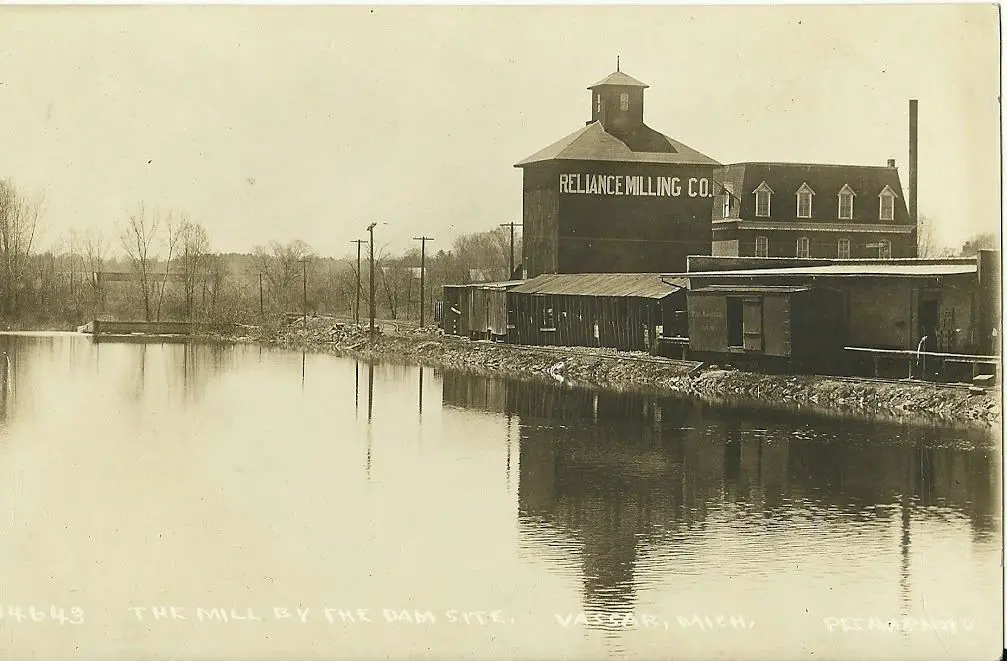
Vassar’s story begins on the shores of the Cass River. The river itself “flows through the city” of Vassar, and from the town’s founding in 1849 the river powered the community. In the late 1800s Vassar was surrounded by great stands of white pine. Those trees earned the city its nickname “Cork Pine City,” and for decades its economy depended on lumber. As one history notes, “Vassar’s growth for the next thirty years was based mainly on its lumbering”. Sawmills lined the river, and logs bound for Saginaw Bay floated downstream.
Industry and Main Street Commerce
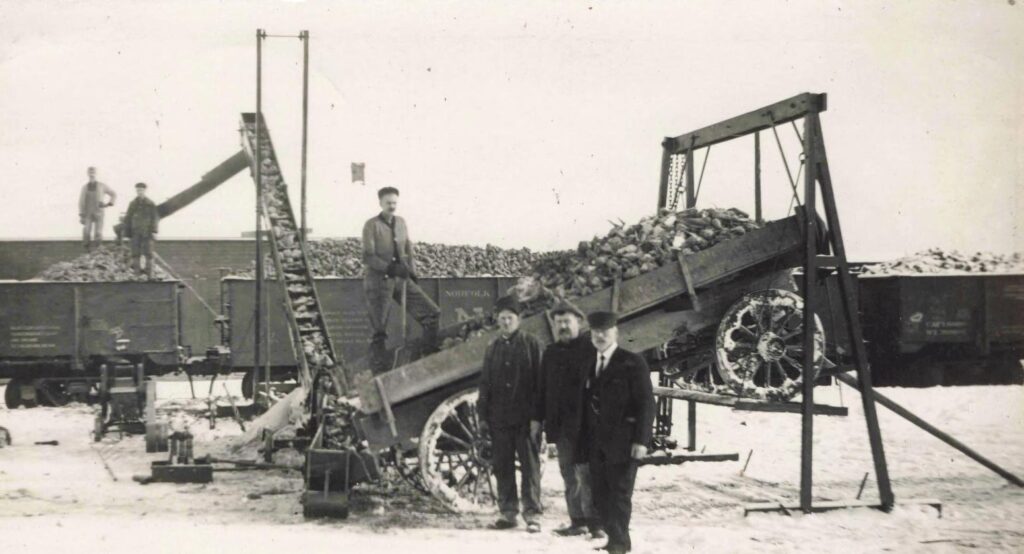
By the early 20th century the giant pines were mostly gone. The forest was “depleted,” and townspeople turned to other work. Vassar diversified into farming, manufacturing and retail. Fields of beets and corn surrounded town.
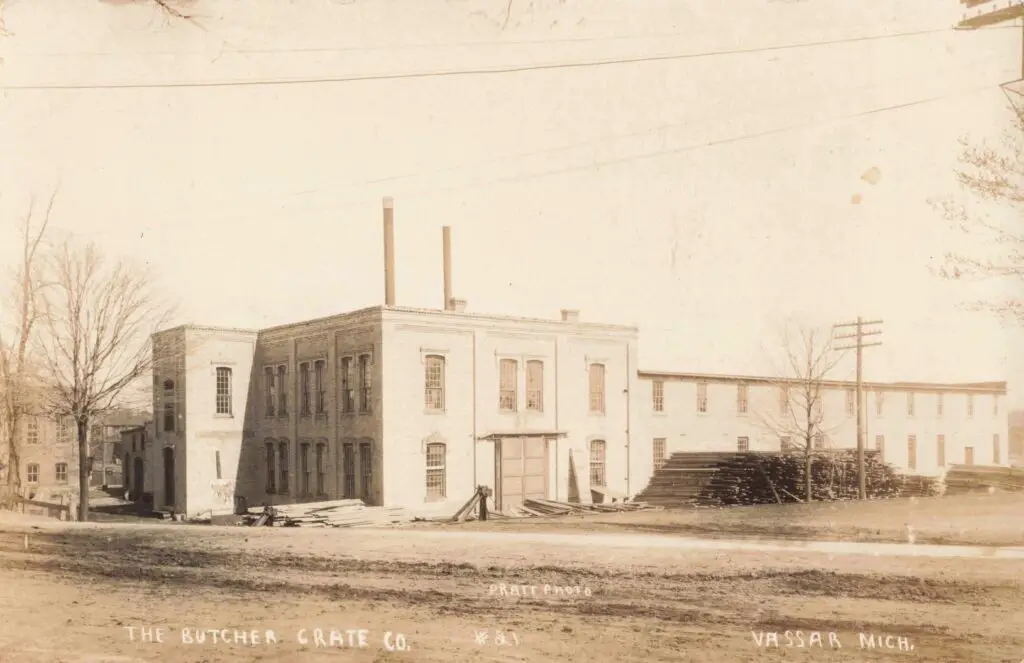
In place of the old mills, small factories appeared: one built wooden crates for shipping (the Butcher Crate Company) and another cast metal parts (the Vassar Foundry). These factories are visible in historical photos from that era.

Meanwhile, downtown Vassar (around the intersection of Huron Avenue and Prospect Street) bustled with shops. Block after block of brick storefronts had large windows and awnings. Hardware and general stores served local farmers, and the Columbia Hotel (a grand corner building with a round turret) welcomed travelers.
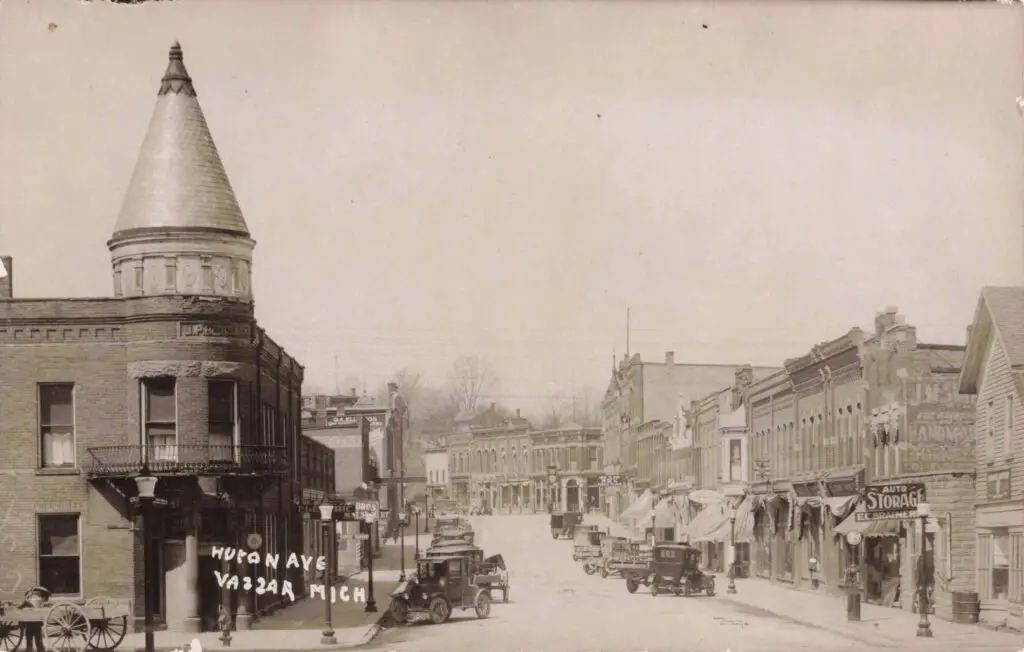
When the factory whistles blew each morning, merchants opened their doors to a hardworking community. Local newspapers advertised farm equipment, clothing stores, and bicycle shops along Main and Huron.
Railroads Arrive
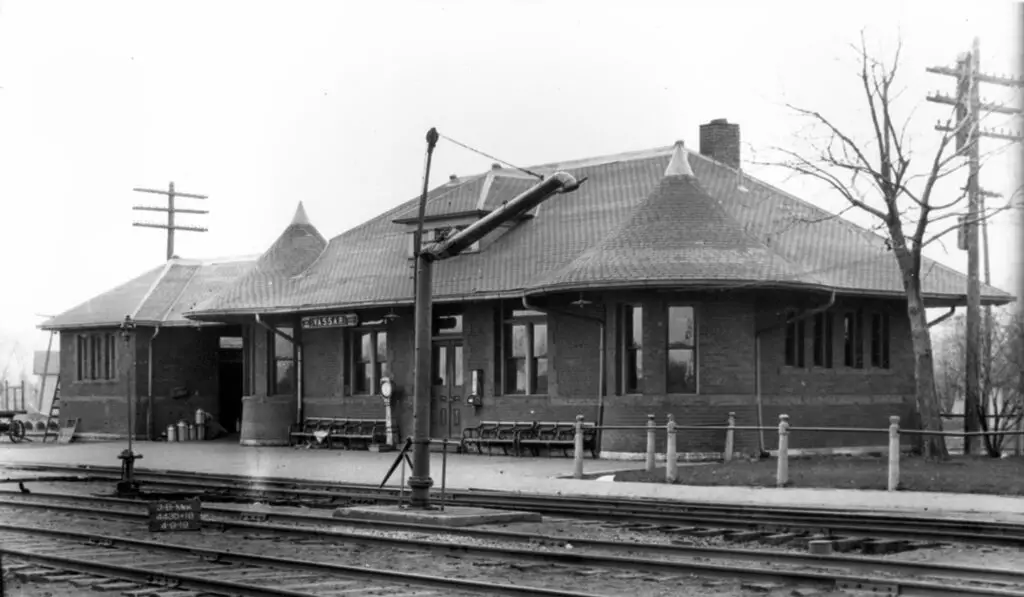
The coming of the railroad was a turning point for Vassar. In 1871 the town became a junction where two rail lines crossed. One was Michigan Central’s Bay City Branch (from Detroit) and the other was the Port Huron & Northwestern line (later Pere Marquette) running toward Port Huron. By the early 1900s a handsome brick station stood at this crossing. Its Romanesque style gave it wide eaves and arched windows (a photo of the depot from that time survives). Every day passengers boarded wooden coach cars on trains heading north or east, and freight trains carried lumber, farm goods, and factory products. The railroad depot linked Vassar’s businesses to the wider world.
Floods on the Cass River

Water could help or hurt the town. In 1910 a municipal engineer noted that Vassar’s commercial center lay in a floodplain. In fact, local records show that since 1900 “Vassar has flooded at least 28 times.” Some floods were minor nuisance — streets turned to creeks and basements got soggy. But others were disasters. In March 1908, an “All-night rain” caused the Cass River to crest over 14 feet above flood stage, submerging the business district.
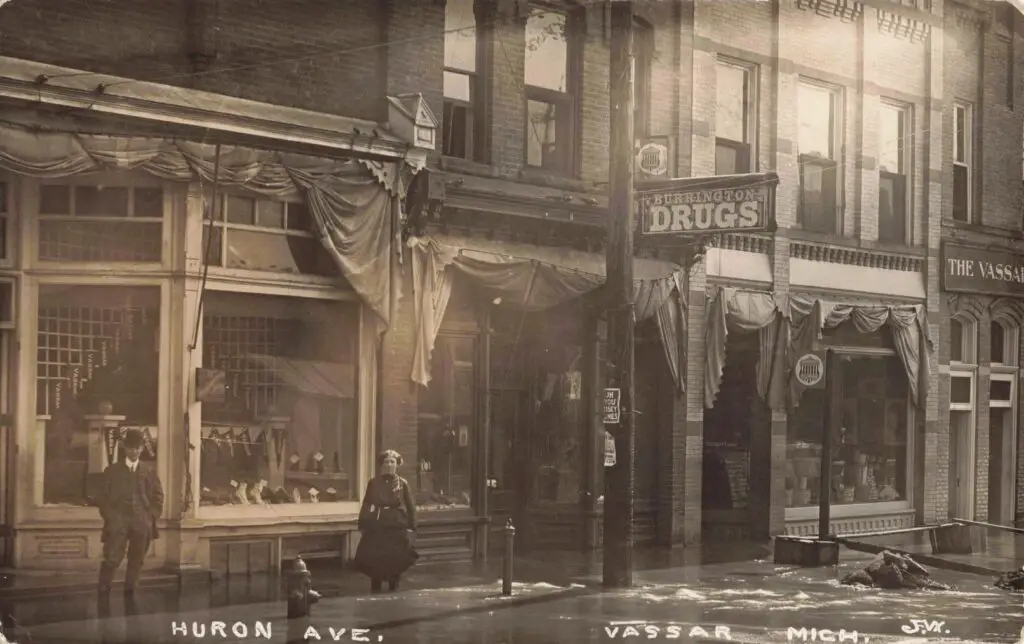
Contemporary accounts report that 8 feet of water covered Huron Avenue for days. Shopkeepers rowed boats in their stores to salvage goods. Another bad flood came in 1916, when residents famously used a rowboat to ferry a passenger down a submerged Huron Avenue. (Photos from the era show whole storefronts inundated in muddy water.) City officials eventually installed sirens to warn of rising waters and built better dams upstream, but the Cass River’s mood remained unpredictable.
The 1911 Train Wreck
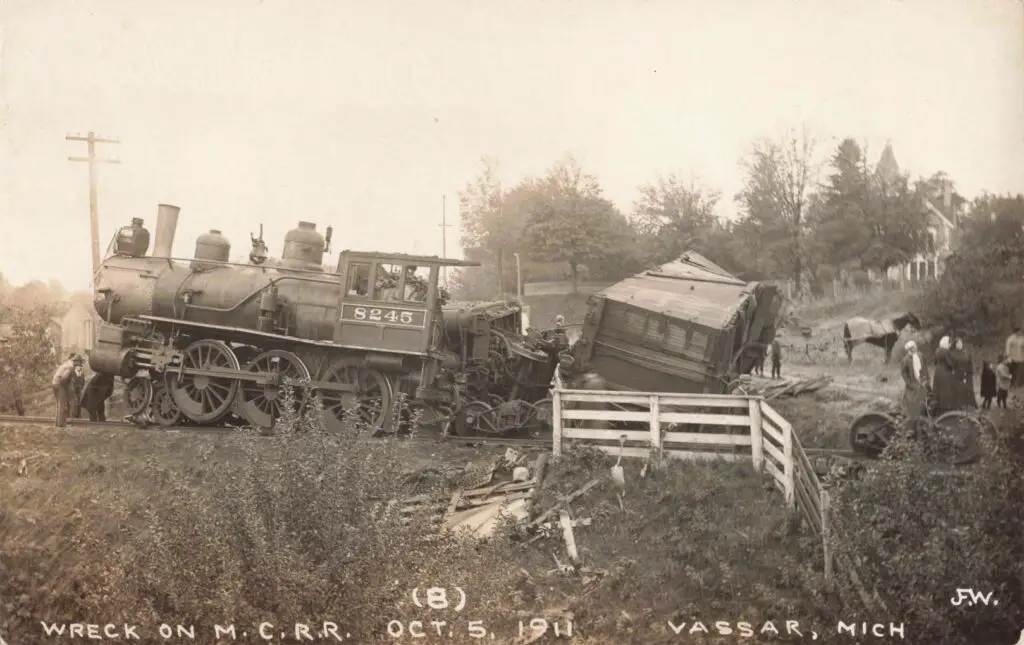
Trains brought a mix of progress and peril. One harrowing incident happened on October 5, 1911. Early that morning a Michigan Central freight train derailed near the Vassar depot. Newspaper reports of the time told of iron wheels twisted and wooden cars smashed into splinters. Miraculously, the crew and any nearby passengers survived, but the sight was shocking for a small town.
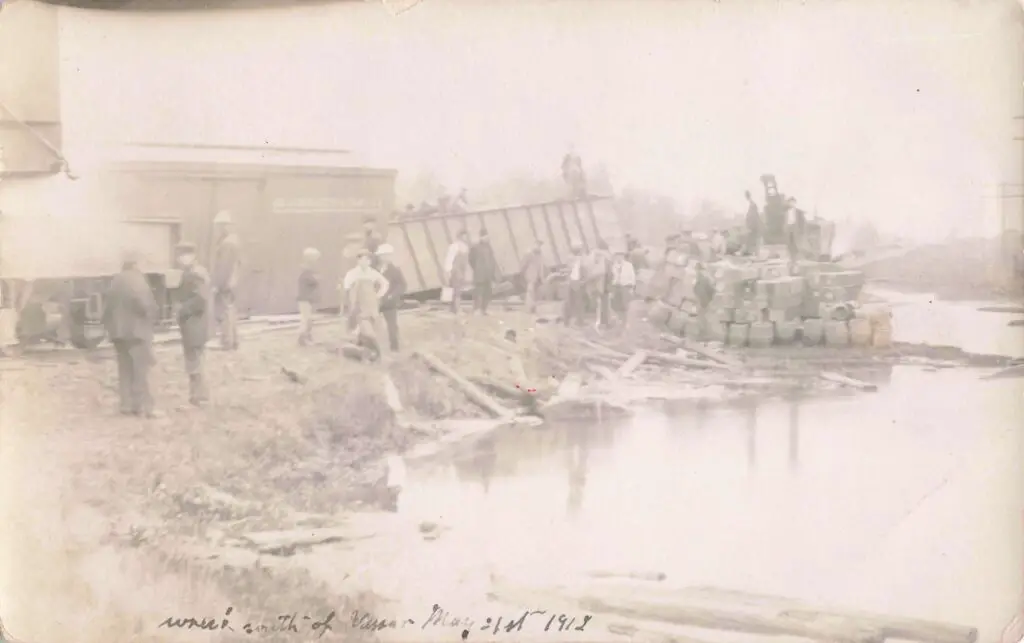
A local postcard (marked “Wreck on M.C.R.R. Oct. 5, 1911, Vassar, Mich.”) shows men and curious residents examining the wreckage beside the tracks. It is a snapshot of crisis: broken timbers, a piled-up locomotive and freight cars. Clearing the debris took many hours. The wreck made headlines in surrounding counties, reminding people that even routine rail travel could be dangerous.
Life by 1930 and Legacy.
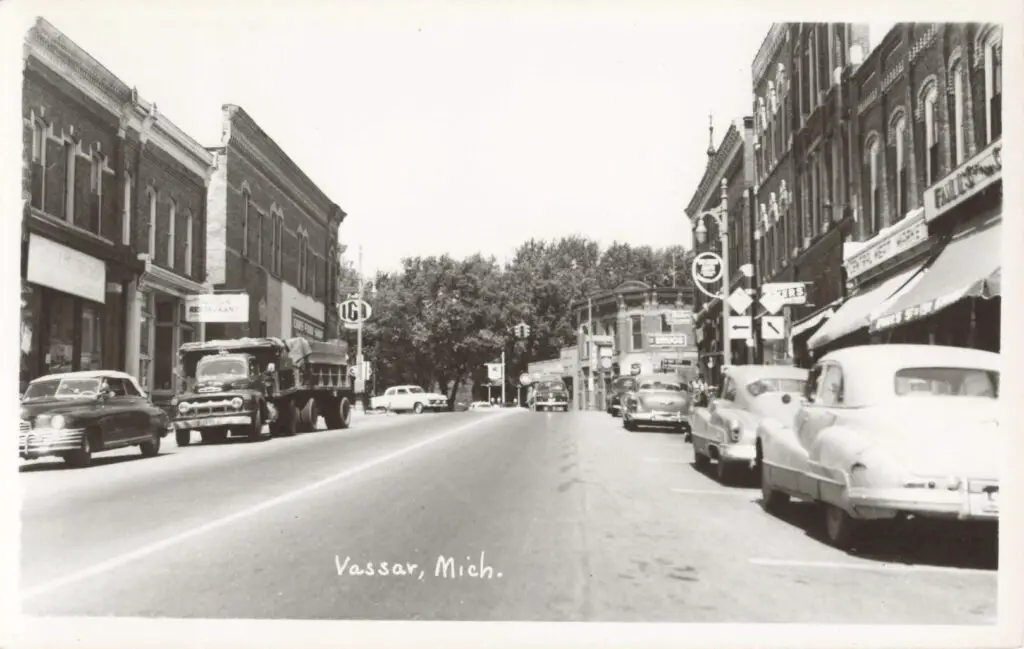
In the 1920s Vassar began to grow again. After a slight population drop in the 1910s, the 1930 census recorded a rebound to 1,816 people. The Depression was near, but the town still had schools, a library, churches and businesses on Main Street. Most of the downtown buildings from 1908 remained. The mill at the Cass River dam, built by the founders, still turned a water wheel up until WWII.
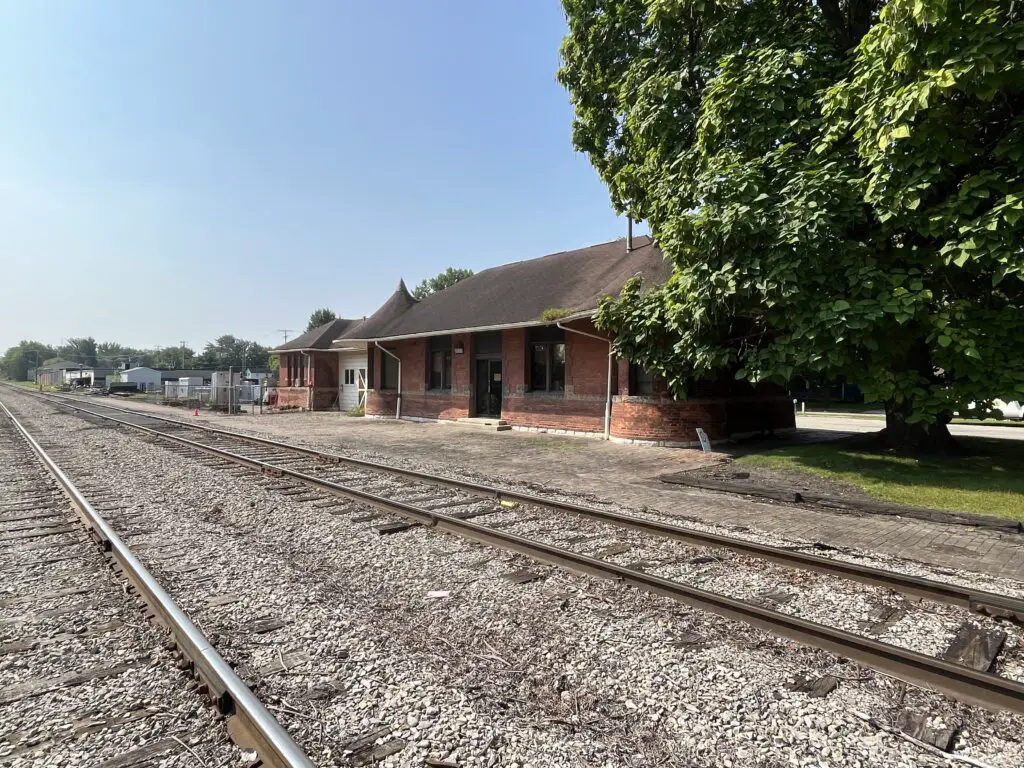
Crucially, the railroad station remained a landmark. In fact, that depot building endures to this day. It was never demolished or replaced. Today it serves as the office for a regional freight railroad. A visitor can stand on the same platform where 1920s passengers once waited and see a modern engine pass – a living reminder of Vassar’s connection to Michigan’s rail history.
Final Thought About the History of Vassar Michigan
The history of Vassar Michigan between 1908 and 1930 is a reminder that small towns often face big challenges. Floods came and went. Trains rolled in and sometimes wrecked. But the town kept working — building crates, casting iron, selling hardware, and raising families. Some of the buildings from that time still stand. So does the old depot. The history of Vassar, Michigan, lives on in the photos, the streets, and the stories passed down. It’s a past worth remembering — and sharing.

